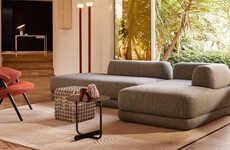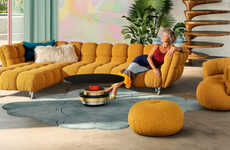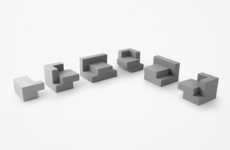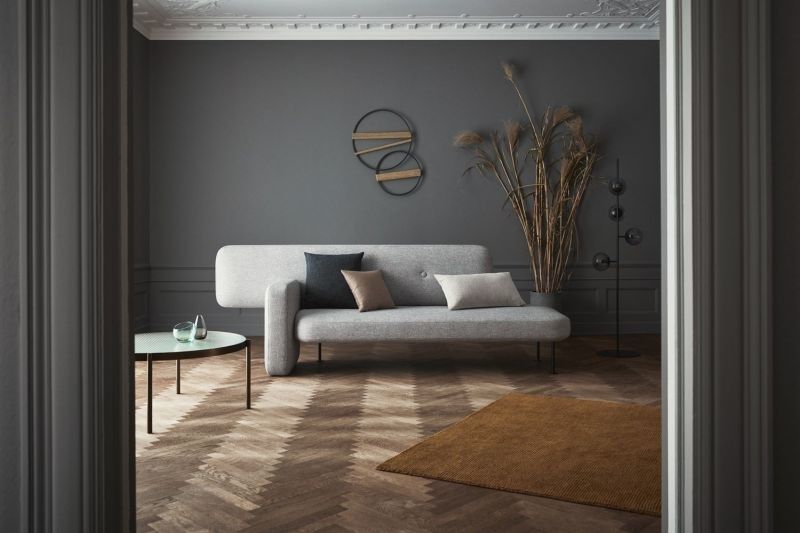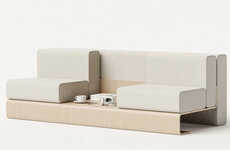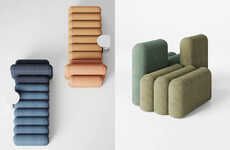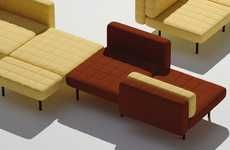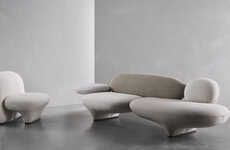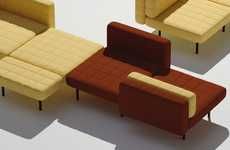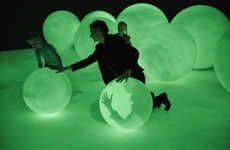
The Bau Design 'Pebble' Sofa Can be Used Alone or in Multiples
Michael Hemsworth — July 5, 2019 — Art & Design
The Bau Design 'Pebble' sofa is an asymmetrical furniture creation by Danish designer Santiago Bautista that seeks to provide a modern aesthetic that is also inherently comfortable. The eye-catching design looks like the rear backrest has been slid over to one side, which creates a small void on the opposite end that is filled in the front with a built-in side table. This creates a multifunctional design that is perfect for small living areas, offices or waiting rooms to convey a certain sense of efficiency.
The Bau Design 'Pebble' sofa is also focused on modularity by enabling multiple units to be linked together to create a more substantial seating section. This accommodates larger areas that require more seating to make the furniture piece suitable for any kind of space or function.
Image Credit: Bau Design/Bolia
The Bau Design 'Pebble' sofa is also focused on modularity by enabling multiple units to be linked together to create a more substantial seating section. This accommodates larger areas that require more seating to make the furniture piece suitable for any kind of space or function.
Image Credit: Bau Design/Bolia
Trend Themes
1. Modularity in Furniture Design - There is an opportunity to disrupt the furniture industry by creating modular furniture designs that can be customized and expanded to fit any space or function.
2. Asymmetrical Aesthetics - Designers can explore asymmetrical design principles to create eye-catching and unique furniture pieces that offer a modern aesthetic while maintaining comfort.
3. Multifunctional Furniture Solutions - There is a market for furniture pieces that serve multiple functions, such as incorporating built-in side tables or storage compartments, to maximize efficiency and meet the needs of small living areas, offices, or waiting rooms.
Industry Implications
1. Furniture Design - Innovative furniture designers can leverage modularity, asymmetrical aesthetics, and multifunctionality to create disruptive products that cater to the evolving needs of consumers.
2. Interior Design - Interior designers can embrace modularity, asymmetrical aesthetics, and multifunctional furniture solutions to transform spaces and create unique and efficient environments.
3. Office Design - Companies and office design professionals can incorporate modular and multifunctional furniture pieces with asymmetrical aesthetics to optimize productivity and create visually appealing workspaces.
3.8
Score
Popularity
Activity
Freshness



